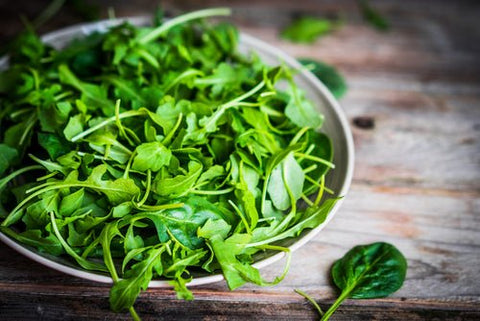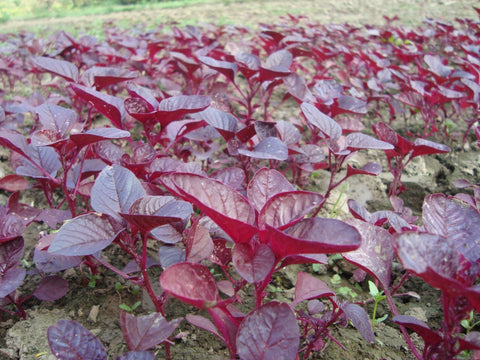Top 10 Foods That Lower Blood Pressure
Many foods that lower blood pressure are nitrate-rich vegetables found at the local grocery store. Nitric oxide (NO) is a colorless gas found in the body that plays a vital role in overall health, and whole foods containing nitrates are natural nitric oxide boosters.
Dietary nitrate converts to nitrite when mixed with bacteria on the back of the tongue. As it continues down the stomach and into the gastrointestinal tract, nitrite converts to nitric oxide. Many foods that help lower blood pressure are also natural nitric oxide boosters.
Hypertension, or high blood pressure, is one of the most easily modified risk factors associated with an increased risk of cardiovascular disease. A 2018 study from The University of Alabama at Birmingham revealed that a heart-healthy diet is suggested for all people with high blood pressure, including individuals on anti-hypertensive medications.
A heart-healthy diet should be filled with select whole foods like vegetables, fruits, whole grains, nuts, legumes, and lean protein. The ten foods listed here boost nitric oxide, supporting heart health and blood pressure control.
10 Foods That Lower Blood Pressure
1. Beet / Beetroot
Beetroot is high on the list of foods that help lower blood pressure. Beets are frequently studied for their nitrate content and widespread health benefits. Beet greens, the leafy parts of the plant, can also be cooked down and eaten for added nitrate density. So, it is best to purchase fresh beets with their greens still attached.
Beetroot supplements have been shown to support healthy daily systolic blood pressure (BP) levels. A 2014 study from Newcastle University observed the influence of beetroot on the BP of older, overweight participants. After three weeks of consistent supplementation, participants saw a reduction in daily blood pressure levels.
However, the participants did not maintain the effect after the interruption of supplementation. Regular consumption of beetroot supports many overall health benefits and may play a role in blood pressure control.
2. Red Spinach

Red spinach is a potent nitric oxide booster that boasts various benefits for the body. 400mg of nitrate, or 4 grams, increases athletic performance by raising nitric oxide levels for several hours. Red spinach also contains betacyanin which supports antioxidant, anti-inflammatory and detoxification properties.
Alongside these benefits, red spinach has been studied for vascular health. A 2015 study from St. Michael’s University showed dietary nitrate’s promising potential for improving cardiovascular health. Healthy participants ingested red spinach every day while researchers observed their arterial stiffness and central blood pressure. The positive results showed that red spinach might support healthy blood pressure.
3. Arugula
Arugula is a popular cruciferous vegetable, also known as “rocket,” and it is another healthy source of nitrate. A 2016 study from the State University of Rio de Janeiro assessed the beneficial effects of dietary nitrate on endothelial function and blood pressure levels. A chart displaying vegetable groupings according to nitrate concentration showed arugula as very high with a >250mg concentration, alongside red spinach, beetroot, and celery.
Results showed that dietary nitrate like arugula serves as a complementary therapy to support hypertension treatment with benefits for cardiovascular health.
4. Broccoli
Broccoli is a good source of nitrate, landing it on the list of foods that lower blood pressure. It also contains a well-studied phytochemical called sulforaphane that has powerful antioxidant properties.
Alongside its role as a nitric oxide booster, the cruciferous vegetable catalyzes the conversion of glucoraphanin into sulforaphane, improving blood pressure levels and supporting kidney health.
5. Celery
Celery is also on the list of foods that help increase nitric oxide levels. In addition to nitrate, celery also contains three chemicals that may additionally support healthy blood pressure. These chemicals include 3-n butylphthalide, apigenin, a plant-based antioxidant, and omega-6 fatty acids. Celery also contains phytochemical compounds called phthalides. These nutrients produce synergistic benefits that may work together to support healthy blood pressure levels.
6. Kale
Kale is a nutrient-dense leafy green known for being a natural nitric oxide booster. It is part of the brassica family, which also includes arugula, bok choy, and mustard greens. Chewing kale is also associated with a healthy oral microbiome due to its prebiotic nitrate qualities. Kale contains antioxidants like the flavonoids kaempferol and quercetin. These nutrients may possess cardio-protective and anti-inflammatory benefits.
A 2015 study from Hannam University tested regular consumption of kale on blood pressure, lipid profiles, and blood glucose in subclinical hypertension patients. When researching foods that lower blood pressure, daily consumption of kale is a beneficial way to support cardiovascular health.
7. Bok Choy

Bok choy, also called pak choi, contains good levels of nitrates and is one of the top foods that lower blood pressure.
Bok choy has a high potassium content and a low amount of sodium. One cup of bok choy contains 631mg of potassium. Its folate and vitamin B6 have also been linked to reducing amino acid homocysteine in the blood. High levels of homocysteine are commonly associated with cardiovascular disease. The high nutrient and nitrate index may work together to support heart health and blood pressure.
8. Mustard Greens
Like bok choy, mustard greens are a low sodium food rich in potassium and folate. They are full of natural nitrates and serve as one of the less commonly consumed foods that lower blood pressure.
The effect of green leafy and cruciferous vegetable intakes on cardiovascular disease has been extensively studied. The combination of nitric oxide boosting potential and low sodium content makes mustard greens a heart-healthy addition to a well-rounded diet.
9. Rhubarb
Rhubarb looks similar to celery while boasting a unique red color. While the leaves are highly toxic, the rhubarb stalk contains anthocyanins, potent antioxidants known as flavonoids. A half-cup of cooked rhubarb is a good source of vitamin K, calcium, and vitamin C.
It is known for its free-radical fighting benefits, with beneficial amounts of nitrates. The stilbenes rhapontigenin, piceatannol, and resveratrol also help increase nitric oxide levels. These copious benefits make rhubarb a great vegetable to support vascular health and overall wellbeing.
10. Spirulina

Spirulina is blue-green algae that contains a good source of B vitamins, beta-carotene, and vitamin E. Spirulina powder has become a popular superfood due to its level of antioxidants, minerals, chlorophyll, phycocyanobilin, and vegan protein content. It is high in SP3–SP6 peptides that increase nitric oxide levels and may support blood flow. Spirulina is a beneficial food for full-body health and heart-protecting benefits.
The Connection Between Nitrate-Rich Vegetables and Foods That Help Lower Blood Pressure
Many foods that lower blood pressure are nitrate-rich vegetables containing a diverse array of other nutrients. A heart-healthy diet should include a variety of colorful vegetables to support overall health. Incorporating these whole foods into daily meals and supplementing with a high nitrate beetroot supplement or red spinach supplement may help support nitric oxide levels.
Increasing your body’s nitric oxide levels produces numerous benefits for the body, including energy, endurance, oxygen availability, and vascular protection.
References
Oparil S, Acelajado MC, Bakris GL, et al. Hypertension. Nat Rev Dis Primers. 2018;4:18014. Published 2018 Mar 22. doi:10.1038/nrdp.2018.14
Jajja A, Sutyarjoko A, Lara J, Rennie K, Brandt K, Qadir O, Siervo M. Beetroot supplementation lowers daily systolic blood pressure in older, overweight subjects. Nutr Res. 2014 Oct;34(10):868-75. doi: 10.1016/j.nutres.2014.09.007. Epub 2014 Sep 28. PMID: 25294299.
Jovanovski, Elena et al. “Effect of Spinach, a High Dietary Nitrate Source, on Arterial Stiffness and Related Hemodynamic Measures: A Randomized, Controlled Trial in Healthy Adults.” Clinical nutrition research vol. 4,3 (2015): 160-7. doi:10.7762/cnr.2015.4.3.160
Senanayake GV, Banigesh A, Wu L, Lee P, Juurlink BH. The dietary phase 2 protein inducer sulforaphane can normalize the kidney epigenome and improve blood pressure in hypertensive rats. Am J Hypertens. 2012 Feb;25(2):229-35. doi: 10.1038/ajh.2011.200. Epub 2011 Nov 3. PMID: 22052072.
Pollock RL. The effect of green leafy and cruciferous vegetable intake on the incidence of cardiovascular disease: A meta-analysis. JRSM Cardiovasc Dis. 2016;5:2048004016661435. Published 2016 Aug 1. doi:10.1177/2048004016661435
Han JH, Lee HJ, Kim TS, Kang MH. The effect of glutathione S-transferase M1 and T1 polymorphisms on blood pressure, blood glucose, and lipid profiles following the supplementation of kale (Brassica oleracea acephala) juice in South Korean subclinical hypertensive patients. Nutr Res Pract. 2015 Feb;9(1):49-56. doi: 10.4162/nrp.2015.9.1.49. Epub 2015 Jan 28. PMID: 25671068; PMCID: PMC4317480.





Comments (0)
There are no comments for this article. Be the first one to leave a message!